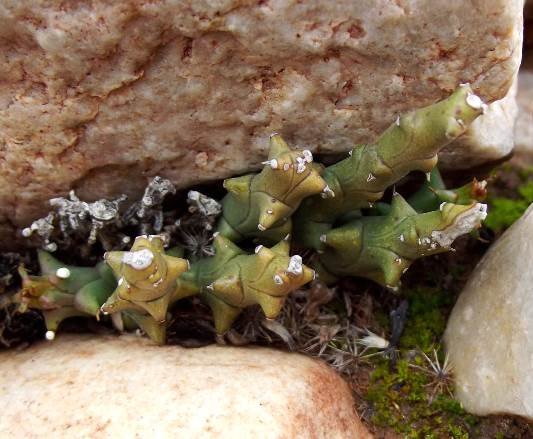Euphorbia tridentata

Author: Ivan Lätti
Photographer: Louis Jordaan
Euphorbia tridentata is a dwarf stem-succulent that grows from a tuberous rootstock. Few finger-like branches grow from the base, the stems sometimes reaching 10 cm in length. Older branches may rebranch. The rough stem surfaces are covered in prominent tubercles.
The cyathia or false flowers are short-stalked and solitary, greenish white or white, sometimes with some purple. Flowering happens late in spring and early in summer.
The nectar glands around the flowers have three, sometimes four forked extensions projecting erectly to about 3 mm, giving rise to the specific name of tridentata. This name is derived from the Latin words tres meaning three and dens meaning tooth.
The species distribution is limited to a part of the Western Cape around Heidelberg to Riversdale and into the Little Karoo, as well as regions in the Eastern Cape as far east as Makhanda. The photo was taken near Calitzdorp.
The habitat is semi-arid scrub in rocky places. The species is not considered threatened in habitat early in the twenty first century.
The species may be renamed E. patula subsp. patula, will be changed thus or that name is sometimes used (Frandsen, 2017; Smith, et al, 2017; Bond and Goldblatt, 1984; iNaturalist; Wikipedia; http://redlist.sanbi.org).

